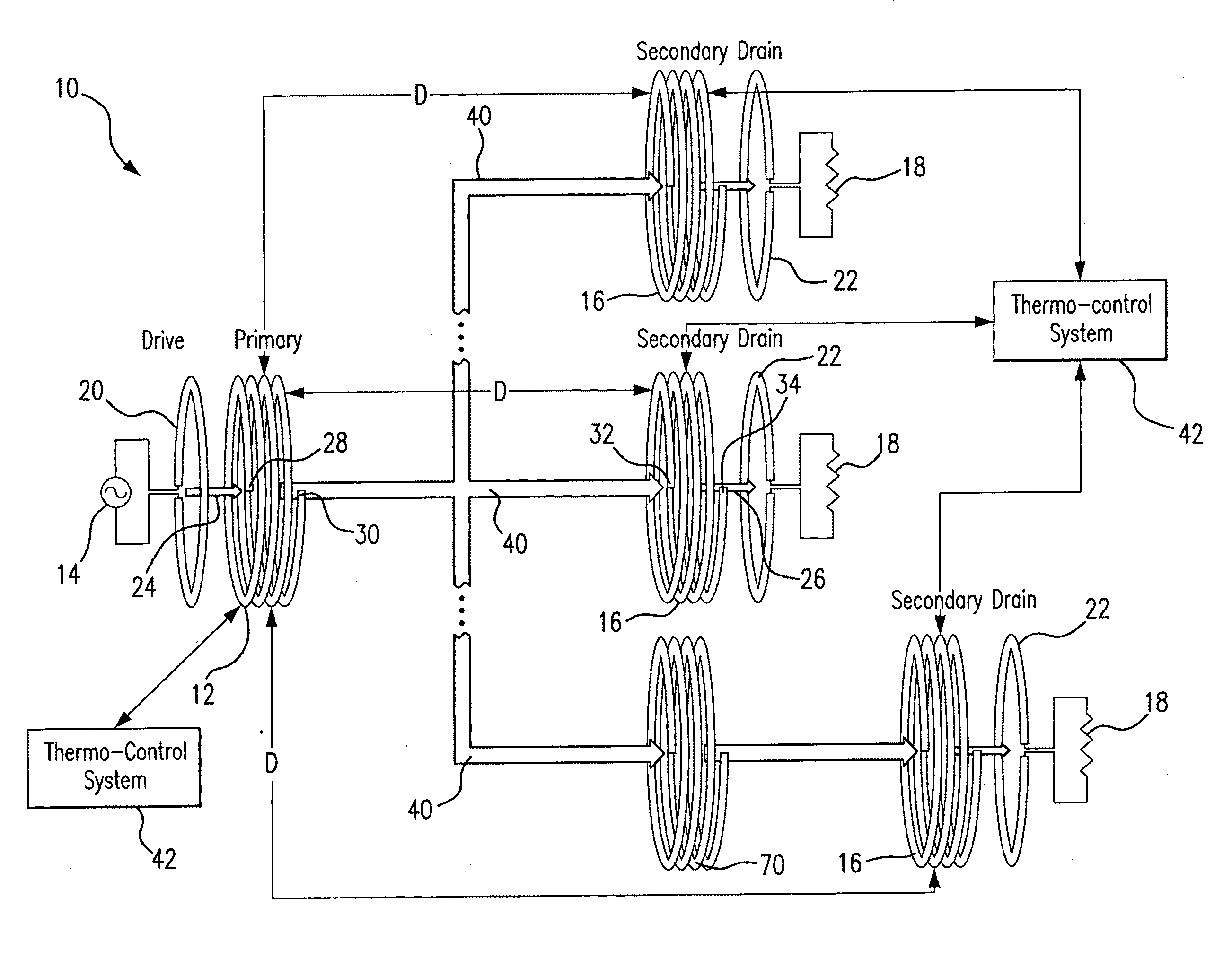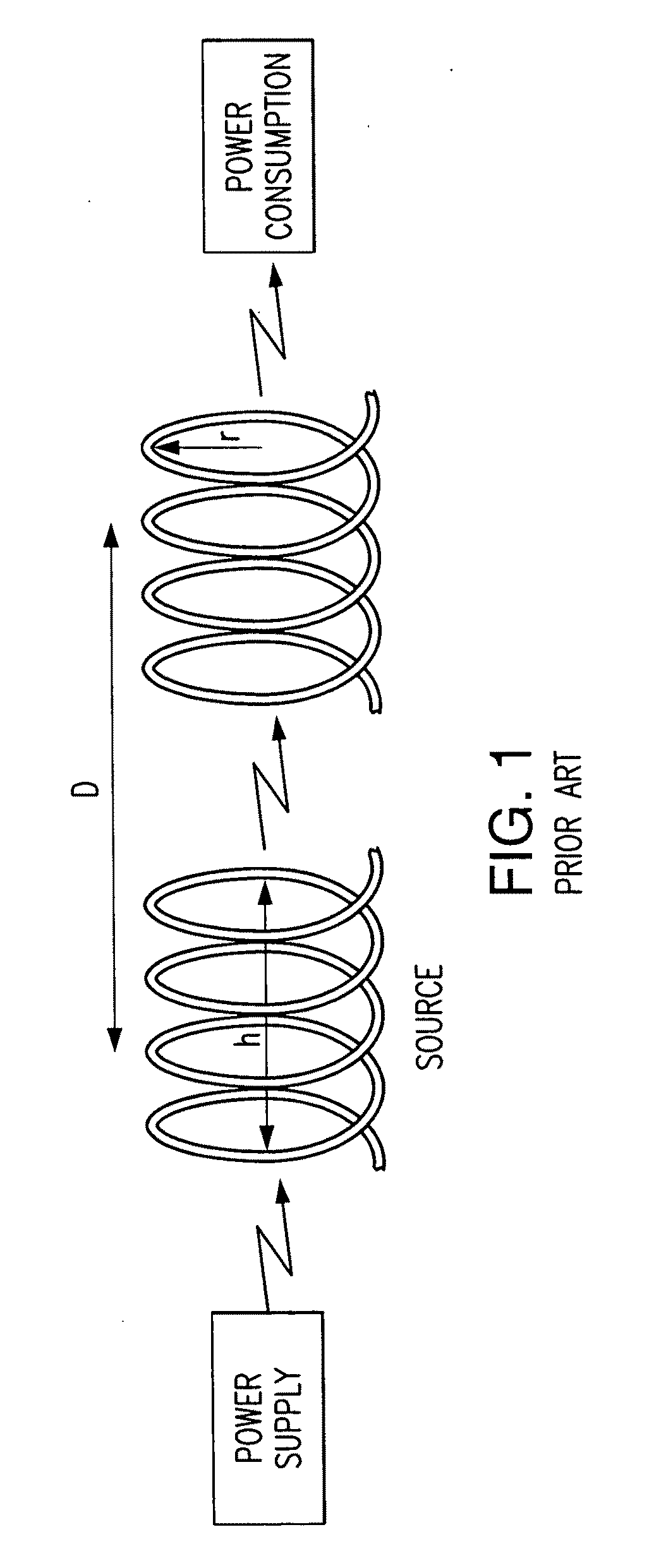Method and system for long range wireless power transfer
a wireless power transfer and wireless technology, applied in the field of long-range wireless power transfer, can solve the problem that the system is incapable of efficient power transfer with respect to relatively long-range applications, and achieve the effect of high power transfer efficiency
- Summary
- Abstract
- Description
- Claims
- Application Information
AI Technical Summary
Benefits of technology
Problems solved by technology
Method used
Image
Examples
Embodiment Construction
[0050]Referring to FIGS. 2 and 3, the system 10 for a long range inductive power transfer includes a source oscillator 12 (also referred to herein as a transmitting oscillator, or a primary oscillator) which is connected to a power source 14, and one or several receiving (also referred to herein as secondary) oscillator(s) 16 physically separated by a distance D from the source oscillator 12.
[0051]As presented in FIG. 2, the system 10 may include a number of receiving oscillators 16, each for powering a corresponding power consuming device 18, such as, for example, cell phones, TVs, computers, etc. It is to be understood by those skilled in the art, that although any number of the secondary oscillators 16 is envisioned in the present system, for the sake of simplicity further disclosure will be presented based on a single secondary oscillator design.
[0052]The energy provided by the power source 14 to the source oscillator 12 is wirelessly transferred in the system 10 in a non-radiat...
PUM
| Property | Measurement | Unit |
|---|---|---|
| frequency | aaaaa | aaaaa |
| distance | aaaaa | aaaaa |
| diameters | aaaaa | aaaaa |
Abstract
Description
Claims
Application Information
 Login to View More
Login to View More - R&D
- Intellectual Property
- Life Sciences
- Materials
- Tech Scout
- Unparalleled Data Quality
- Higher Quality Content
- 60% Fewer Hallucinations
Browse by: Latest US Patents, China's latest patents, Technical Efficacy Thesaurus, Application Domain, Technology Topic, Popular Technical Reports.
© 2025 PatSnap. All rights reserved.Legal|Privacy policy|Modern Slavery Act Transparency Statement|Sitemap|About US| Contact US: help@patsnap.com



